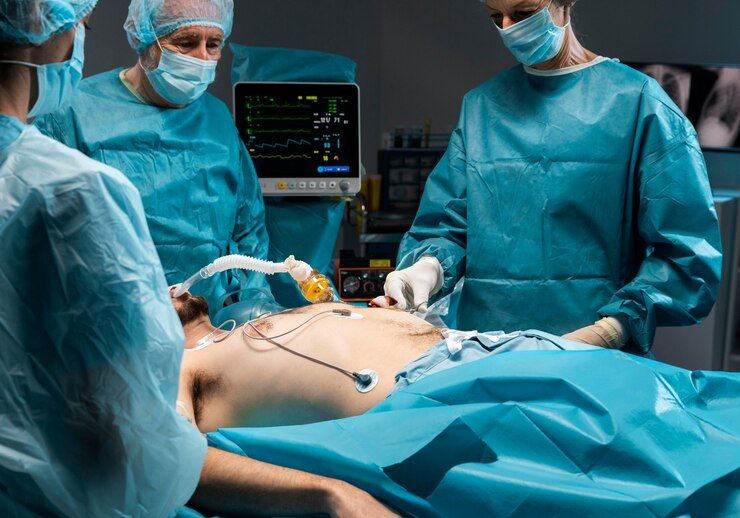Minimal Access Surgery (MAS) has become a preferred approach in modern healthcare for many surgical procedures. By using small incisions and precision tools, surgeons can access internal organs with minimal disruption to surrounding tissues. This method reduces recovery time, lowers the risk of complications, and offers patients a quicker return to daily activities. The growing adoption of MAS is supported by the introduction of advanced technologies that enhance surgical accuracy and safety.
Understanding Minimal Access Surgery
Minimal Access Surgery uses specialised instruments and high-resolution imaging to perform procedures through small openings in the body. Unlike traditional surgery, which may require large incisions, MAS reduces tissue damage while maintaining procedure effectiveness. Patients benefit from shorter hospital stays, reduced post-operative pain, and smaller scars.
Key Technologies Enhancing MAS
The success of Minimal Access Surgery is closely linked to the tools and systems used. Over the years, hospitals have introduced technologies that allow surgeons to work with greater precision, control, and visual clarity. Some of the most significant advancements include:
High-Definition Imaging Systems
Clear visibility is essential in MAS. Modern imaging systems provide high-definition and 3D visuals, allowing surgeons to see intricate details of organs and tissues. This accuracy helps in identifying even the smallest abnormalities and ensures targeted treatment.
Robotic-Assisted Surgical Systems
Robotic technology has brought a new dimension to MAS. With robotic arms controlled by the surgeon, movements can be more precise and stable than manual handling. This technology is particularly helpful in complex surgeries involving delicate structures, such as in gynaecology, urology, and cardiac procedures.
Advanced Energy Devices
Energy-based surgical tools, such as ultrasonic scalpels and bipolar devices, enable controlled cutting and sealing of tissues. These devices reduce blood loss and enhance the safety of the procedure by minimising damage to nearby tissues.
Integrated Operating Theatres
Hospitals are increasingly adopting integrated operating theatres where imaging systems, surgical equipment, and monitoring devices are connected through a central control unit. This allows surgeons to access patient data, view real-time imaging, and coordinate with the surgical team without leaving the sterile field.
Specialised Applications of MAS
Minimal Access Surgery is used in a wide range of specialities, each benefiting from the precision and reduced invasiveness of the approach.
- Gastrointestinal Surgery: For conditions like gallstones, hernias, and certain cancers, MAS allows effective treatment while reducing recovery time.
- Gynaecology: Procedures such as hysterectomies, fibroid removal, and endometriosis treatment are increasingly performed through MAS techniques.
- Urology: Kidney stone removal, prostate surgery, and kidney transplants have seen improvements in outcomes with MAS.
- Cardiothoracic Surgery: Some heart valve repairs and lung surgeries can be performed with minimal access, reducing the strain on patients during recovery.
- Orthopaedics: Joint surgeries and certain spine procedures now use MAS to improve post-surgery mobility.
These applications show how MAS is transforming surgical care across multiple medical fields, offering patients safer procedures and quicker recovery.
Role of Hospitals in Advancing MAS
The adoption of MAS depends heavily on the infrastructure and expertise available in hospitals. A hospital offering advanced MAS must invest in the latest technology, continuous training for surgeons, and well-equipped operating theatres. The presence of experienced specialists is equally important, as their skill in handling MAS tools directly impacts the success of the procedure. A well-prepared Minimal Access Surgery Hospital ensures that patients receive both safe and effective treatment.
Training and Skill Development
Technology alone cannot ensure successful MAS outcomes. Surgeons and medical teams undergo extensive training to master the use of advanced tools. Simulation-based training programmes, live workshops, and regular skill assessments help medical professionals stay updated on new techniques. This commitment to learning ensures that patients benefit from the best available surgical practices.
Safety and Patient-Centred Care
While MAS is generally safe, patient safety remains the top priority. Hospitals implement strict protocols before, during, and after surgery. Pre-surgical evaluations, sterile environments, and close monitoring of vital signs help reduce risks. Patient-centred care also means ensuring clear communication, so patients understand the procedure, expected recovery timeline, and follow-up requirements.
The Future of Minimal Access Surgery
The future of MAS will likely see further integration of advanced imaging, artificial intelligence-based assistance, and improved robotic platforms. These innovations aim to make procedures even less invasive while expanding the types of surgeries that can be performed with minimal access. The focus will remain on improving outcomes, reducing risks, and enhancing patient comfort.
Conclusion
Minimal Access Surgery has transformed the way many medical procedures are performed. By combining smaller incisions with advanced technologies, it offers patients safer surgeries and quicker recoveries. The role of technology, skilled surgeons, and well-equipped hospitals is vital for ensuring the success of these procedures. As innovations continue, MAS will likely become the standard approach for more surgeries, providing lasting benefits for patients and healthcare systems alike.

